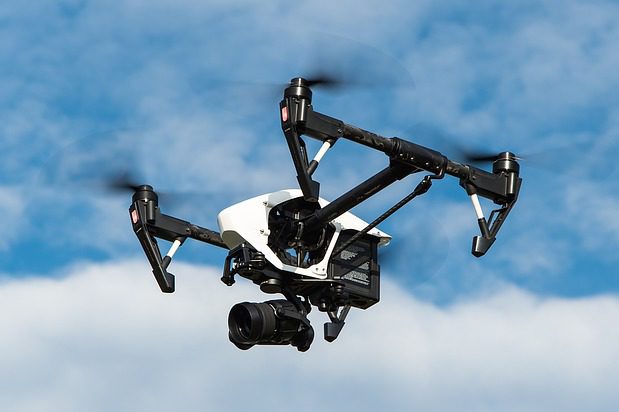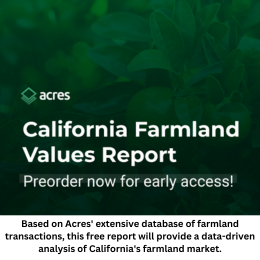November 6, 2018
The brainchild of agtech entrepreneur Orlando Saez and Minnesota corn and soybean farmer Todd Golly, Aker Technology builds agronomic tools to optimize farm production. Based on boots-on-the-ground research, both on Golly’s 6,000-acre farm in Minnesota and in Saez’s family’s native Dominican Republic, the company advances crop diagnostics with patented technology that automates the process of “crop scouting” by detecting pest, crop damage, and other environmental stresses. Its product is unique in that all the data is under-the-canopy geo-referenced observation data, not inferred or approximated by current crop models. Aker counts Bayer Crop Sciences, BASF, and WinField/UNITED among its users.
A cohort of angel investors put the Chicago-based company on the map in September 2015, and it got a $400,000 boost in funding from the Illinois Department of Commerce and Economic Opportunity in May 2017 – its prize for being the top winner in that year’s Clean Energy Trust Challenge pitch competition. Aker plans to close on a $3.5 million funding round by the end of this year.
GAI News caught up with CEO Orlando Saez to see what the future holds for Aker.
- You’ve worked in several industries — telecommunications, engineering – what was the draw to agtech?
Agtech drew me in! I was the first in my family to go to college and I’m very, very lucky and grateful for my professional life, so my focus has pretty much been about reciprocity, to give back for how lucky I’ve been. My interest in agtech grew from my working with kids in emerging markets (in my native Dominican Republic), trying to get them involved in STEM (Science, Technology, Engineering and Math) education, which was not easy since most kids these days are more consumers of technology, than producers. But when, about four years ago, I showed up with a drone, they quickly became interested. So I started looking around at youth projects that would be helpful, sustainable, and impactful, and used drones. This drew me in to the agriculture industry, primarily because of a lack of crop diagnostic tools and a big human capital imbalance – farms are getting bigger but with less people available to manage them. So that got me thinking… here’s a big gap but how to bring it together?
- How did the business take off from there?
Success in my previous businesses has come about primarily because I see technology from a practitioner’s viewpoint. I was looking to buy a drone and met Todd Golly (my now business partner), who was a drone reseller and an experienced farmer managing a 6,000-acre farm in Southern Minnesota. I visited Tom on his farm, and we travelled together for about a year to the Dominican Republic, Guatemala, and Brazil to explore opportunities. I travelled the world with a farmer and came back with a partner.
We learned that while incorporating drones into those emerging markets was a very nascent opportunity; the more immediate and larger opportunity was in our own backyard – the Midwest.
- Aker works on a “freemium” model — can you please explain this, and provide details of the use and benefits of the service?
We learned that the benefit of what we do is accrued not only by the grower, but also by the chemical supplier and the ag retailer. Think of drones similar to radiology. You don’t go directly to the radiologist; you go to the doctor who gives you a referral to the radiologist who does the test. Similarly, Aker supports chemical suppliers and ag retailers by accelerating the adoption of new crop protection inputs and validate their effectiveness before harvest.
We started by creating AkerScout, a free crop scouting mobile app. While AkerScout usage continues to grow, we learned that growers have limited resources, and rely on minimal field crop scouting observations whereby they spray whole fields as a precaution or skip applications of crop protection products to save money. Neither is financially smart or sustainable.
Aker provides effective monitoring of insect, weeds, disease, crop nutrient deficiency, and environmental conditions at the earliest stages of their manifestation. The result augments the grower’s abilities to identify crop threats before spreading, and early enough to drive better outcomes on crop protection product selection and application timing to drive higher yields, lower costs of treatments, and environmental sustainability from unnecessary crop treatments.
- How does Aker bring in revenue?
We operate a drone-based crop mapping service at about $2.50 per acre, collecting NDVI, Thermal and RGB primarily for on-farm input trials serving over 1,000 growers, top ag retailers, and chemical suppliers across 20 states. This service primarily helps suppliers and ag retailers, including Bayer, BASF, Winfield/UNITED, demonstrate the effectiveness and accelerate the adoption of new chemistry.
After several years working with hundreds of growers, top agriculture chemical suppliers and industry professionals, we continue to see the need for ground-truthing verification, not only to assess causality to confirm in-season decisions, but also to gain important insight on environmental field conditions to adjust in-season crop management plans. The need for crop scouting led us to the creation of Aker’s TrueCause™, a hand probe and future autonomous scouting system equipped with computer vision and environmental sensors.
Early this year, we launched a pilot project across Faribault County, Minnesota, using TrueCause™. Aker contracted controlled fields across the county. Similar to a weather service, we sold subscriptions to weekly regional pest alerts and an online county pest map for $300 per user for the entire season. We pre-sold 38 percent of all the growers in the county.
- You have been wise to state, in regard to operating a startup, that “tenancy is essential as well as understanding when is best to enlist help.” How does this make the business model of Aker unique or better suited for success than other agtech companies?
Two things are unique about our company: we focus on practical and fast crop diagnostics like weather, soil, bugs, crop conditions, and we automate the process of collecting data by going under the crop canopy to detect pests, pathogens, and disease at the earliest manifestation underneath the leaves.
Secondly, we work to empower ag retailers, crop consultants, and chemical suppliers with a new and unique dataset that draws from real world farming principles that work for generations to effectively address the disease triangle. Our goal is to better know what growers do, listen to what they need, and provide practical tools that they can relate to.
- What growth is planned for the company?
In the U.S., we plan to deploy service across the top 450 counties responsible for 75 percent of the corn and soybean production in the country, and to reach over $200 million in yearly sales.
We know that there is opportunity in international markets with our tools and infrastructure and have already been to several countries to explore this. This year, we received an investment from THRIVE SVG partners to expand our service in California with our next generation technology.
We plan to close on a $3.5 million funding round and already have a large agriculture strategic lead investor with over 50 percent of the round committed.
-By Michelle Pelletier Marshall
Michelle Pelletier Marshall is the managing editor for Global AgInvesting’s quarterly GAI Gazette magazine and a regular contributor to GAI News. She can be reached at mmarshall@globalaginvesting.com.

Let GAI News inform your engagement in the agriculture sector.
GAI News provides crucial and timely news and insight to help you stay ahead of critical agricultural trends through free delivery of two weekly newsletters, Ag Investing Weekly and AgTech Intel.




